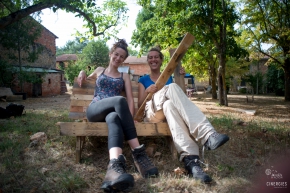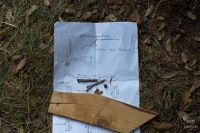Find your way
Follow us on Facebook

Follow us on Facebook

You have to address security issues before starting and throughout your Tour. Once again, anticipation and organization will be the key words to ensure the safety of the participants. Of course, you won't be able to predict everything that may happen, but you should get prepared to meet any unexpected situation or requirement.
To meet the challenge, we suggest you the following:
To ensure participants' health and safety, first you need to know about their health state, their diet, their allergies or any other health issue. Ask them about it as soon as they join the project.
Remind them that the program will not cover for their health expenses or won’t be liable for any damage it may incur. Check if each of them has a health insurance and support them in their efforts to obtain an European Insurance Card (http://ec.europa.eu/social/main.jsp?catId=559). Depending your country, you may also encourage them to contract a liability insurance to cover the costs of potential damage.
As a sending organization, it will be your responsibility to share with the hosting organization any information that can affect the project or require specific attention during its implementation. Be transparent about the participants' health state, even if you believe it is a confidential information. It is crucial for your partners to be informed in order to welcome the participants in good conditions and adapt both the living conditions and the workshops to the participants' needs and requirements.
As hosting organization, you need to find out and assess what risks the venue(s) you selected is carrying and how you will guarantee the safety of the participants throughout your stay.
Examine each of them thoroughly; imagine the different weather conditions you might experience during the Tour; consider a range of scenarios regarding what could happen in the group.
Be pragmatic when planning: What are the accidents and problems that could occur? How can you prevent them trough planning ahead, and how will you deal with them if they happen anyway? List the different problems and check if you can address each of them satisfactorily:
From those questions, buy the relevant equipment for your camp, come up with a list of contact to address health issues in case of need and with a list of safety regulations that you will present to the participants on the first day of the Tour.
 A Tour involves working tools, vehicles, equipment for cooking, tents, shelters, etc. Before the Tour takes place, you need to make sure that:
A Tour involves working tools, vehicles, equipment for cooking, tents, shelters, etc. Before the Tour takes place, you need to make sure that:
Don't be cheap, you can't afford to save money off equipment that may prove dangerous! Take out insurance for vehicles, let aside weak equipment that might break down on the way: it will always be worth it!
Even if you try your best to prevent them, accidents may happen. For this reason,
From our experience, your First Aid Kit must contain at least:
Given that travelling, changing diet and getting out of one's daily routine or comfort zone can provoke digestive uncomfort or troubles for the participants, we suggest you also take some basic antidiarrheal and a few natural laxatives (linseed, dry prunes, malva, althaea or sene herbal tea). They might help the participants to regain their digestive balance and well-being quicker.
When the Tour starts:
Then, throughout the Tour, make sure those rules are enforced. Pay a specific attention to the hygiene of the common spaces. The kitchen, the food storage area, the showers and the toilet facilities have to remain organized and clean. Maintaining a good hygiene and tidiness will prevent many health problems (food poisoning, getting hurt by a random nail, etc.) and will ensure the health of the community.
 When organizing practical workshops during the tour, make sure that the facilitators/trainers take time to explain to the participants what is the procedure of the workshop, which tools will be used and especially how tools or other equipment should be handled. Provide safety equipment to the participants each time needed and remember that they most probably have different backgrounds and different levels of practice: you have to make sure that everyone understands and feels confident in participating.
When organizing practical workshops during the tour, make sure that the facilitators/trainers take time to explain to the participants what is the procedure of the workshop, which tools will be used and especially how tools or other equipment should be handled. Provide safety equipment to the participants each time needed and remember that they most probably have different backgrounds and different levels of practice: you have to make sure that everyone understands and feels confident in participating.
All the workshop long, advise participants to take care of themselves and others around them when they are using tools (either manual or power tools) and to make room between them when working.
Don't be flexible when addressing security issues: safety first, no matter the opinion of the person. Make it clear that safety rules can't be discussed. Either the participants follow them, either they can't take part in the workshop.
Remind the participants that a tool left on the ground is a danger to themselves and to others. At the end of each workshop, always check that all tools and equipment have been put back where they belong so that nobody gets hurt.
